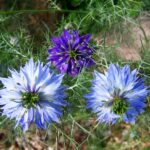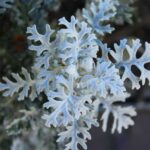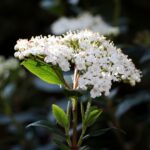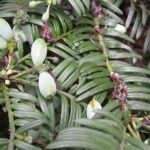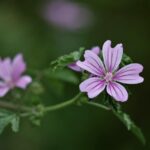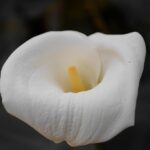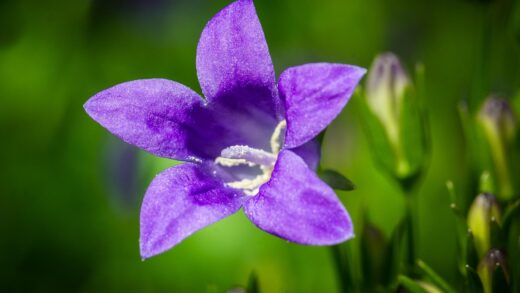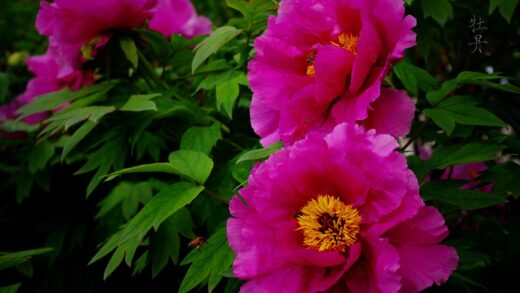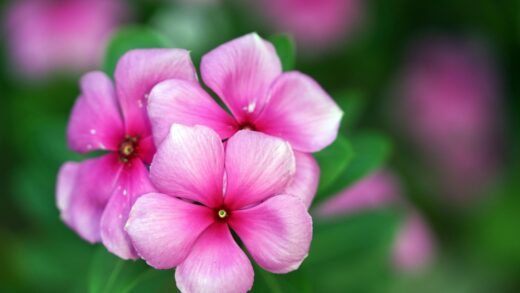Anemone hepatica is a quintessential woodland plant, and its light requirements are a direct reflection of its native habitat. It thrives in the unique lighting conditions found on the floor of a deciduous forest, which are characterized by a dynamic interplay of light and shade that changes throughout the seasons. The ideal lighting for liverworts is dappled or filtered sunlight, particularly during the spring when the plants are in their most active phase of growth and flowering. During this period, before the overhead canopy of trees has fully leafed out, the forest floor receives a significant amount of bright, indirect light. This early spring sunlight is crucial, as it fuels the plant’s flowering and the initial growth of its new leaves.
As the season progresses into summer, the deciduous trees above produce a dense canopy of leaves, casting the forest floor into much deeper shade. This summer shade is equally important for the well-being of Anemone hepatica. It protects the plant’s delicate foliage from the intense, scorching rays of the midday and afternoon sun. Direct summer sun can quickly lead to leaf scorch, causing brown, crispy patches on the leaves, and can induce heat and moisture stress on the entire plant. Therefore, the perfect location in a garden setting is one that mimics this seasonal light pattern: brighter conditions in the spring followed by partial to full shade in the summer.
This specific light requirement makes Anemone hepatica an excellent choice for planting beneath high-canopied deciduous trees such as oaks, maples, or hickories. It is also well-suited for the north or east-facing side of a house, wall, or hedge, where it will be shielded from the harshest afternoon sun. An east-facing location is often considered ideal, as it provides gentle morning sun followed by shade for the remainder of the day. Careful observation of the light patterns in your garden throughout the day and across the seasons is the key to finding the perfect home for these shade-loving plants.
It is a common misconception to think of Anemone hepatica as a deep-shade plant. While it requires protection from direct summer sun, it will not flourish in perpetual, dense shade, such as that found under evergreen trees or on the north side of a tall building where it receives no direct light at all. In overly dark conditions, the plant may survive, but its growth will be weak and spindly, and it will produce few, if any, flowers. The dappled light that filters through a deciduous canopy provides the necessary energy for robust growth and prolific blooming.
Optimizing spring light exposure
The quantity and quality of light received in the spring directly correlates with the health and flowering performance of Anemone hepatica. This is the period when the plant does the majority of its energy production for the entire year. The early emergence of its flowers, often before the new leaves are fully developed, is an adaptation to capitalize on this window of available light before the tree canopy closes. To optimize this, planting sites should be chosen where the early spring sun can reach the plants unimpeded by evergreen foliage or structures.
More articles on this topic
In the garden, this means avoiding planting directly under conifers or broadleaf evergreens like rhododendrons, which cast dense shade year-round. Instead, select locations under deciduous trees and shrubs that are late to leaf out, maximizing the duration of the spring sun exposure. The light in spring is also less intense than in summer, so the plants can tolerate several hours of direct sun during this time without risk of scorching. This spring sunlight is what fuels the production of the vibrant flowers and the development of healthy, new leaves.
A healthy set of leaves, developed in the good light of spring, is essential for the plant’s long-term survival. These leaves will continue to photosynthesize throughout the summer, albeit at a lower rate in the shade, storing energy in the roots for the following year’s display. If the plant receives insufficient light in the spring, it will not be able to produce enough energy to form a strong root system and set abundant flower buds for the next season. This can lead to a cycle of decline, with fewer flowers and less vigorous growth each year.
Gardeners can also manipulate the light conditions to some extent. For example, the selective pruning of lower branches on overhead trees can increase the amount of dappled light reaching the ground without removing the protective summer canopy entirely. This practice, known as ‘limbing up’, can transform a previously dark and unsuitable area into a prime location for cultivating a variety of woodland plants, including Anemone hepatica.
The importance of summer shade
Once the high sun of summer arrives, the role of shade becomes paramount. The primary function of summer shade is to protect the plant from overheating and desiccation. The leaves of Anemone hepatica are not adapted to withstand the intensity of direct summer sunlight, and they will quickly show signs of stress if exposed. Leaf scorch is the most common symptom, where parts of the leaf tissue die and turn brown, reducing the plant’s ability to photosynthesize.
More articles on this topic
Beyond preventing leaf scorch, summer shade also helps to maintain a cooler and more humid microclimate around the plant. This reduces the rate of transpiration (water loss from the leaves) and helps to keep the soil moist for longer periods. In hot, sunny conditions, the plant would lose water much faster than its roots could absorb it, leading to wilting and severe stress. The cool, shady environment of a woodland garden is therefore essential for keeping the plant hydrated and healthy through the hottest part of the year.
The quality of the shade is also a factor. The “dappled shade” created by a tree canopy is ideal because it is not uniformly dark. Shafts of sunlight move across the area as the sun’s position changes, providing brief periods of brighter light without causing overheating. This is a much more beneficial environment than the deep, static shade found next to a solid wall. This moving, filtered light is what Anemone hepatica is perfectly adapted to.
When choosing companion plants, consider their mature size and growth habit. Avoid planting liverworts too close to large, fast-growing perennials like hostas or ferns that might eventually overgrow them and create excessively dense shade. While these plants make excellent neighbors, proper spacing is needed to ensure the smaller Anemone hepatica continues to receive the dappled light it needs and is not completely enveloped in darkness by its larger companions.
Light conditions for container cultivation
When growing Anemone hepatica in containers, the gardener has complete control over the plant’s light exposure. This can be a significant advantage, as the pot can be moved to the ideal location as the seasons change. In the spring, the container can be placed in a location that receives several hours of bright, indirect light or gentle morning sun to encourage strong growth and profuse flowering. An east-facing patio or a bright spot under a deciduous tree would be perfect.
As summer approaches, the container should be moved to a shadier, cooler location. Placing it on the north side of the house, under a porch roof, or beneath the shade of larger garden plants will protect it from the intense midday and afternoon sun. The ability to move the plant is especially useful for preventing the soil in the pot from overheating, which can damage the roots. The pot itself can absorb a great deal of heat when in direct sun, creating an inhospitable environment for the roots of this cool-loving woodland plant.
It is important to remember that even in the shade, a potted plant will receive reflected light from surrounding surfaces like walls and paving. A location in bright, open shade is generally better than one in a dark, enclosed corner. Good air circulation is also important to prevent fungal diseases, so avoid placing the pot in a stagnant, deeply shaded area. The goal is to replicate the cool, airy, and shaded conditions of a summer forest floor.
During the winter, the light requirements are minimal as the plant is dormant. However, the location of the container is still important for protection. An unheated garage or a cold frame provides protection from wind and extreme temperature fluctuations. If leaving the pot outdoors, placing it in a location where it can receive some protection from winter sun and wind, such as against a north-facing wall, is beneficial. The winter sun, although weak, can be enough to cause temperature fluctuations in the pot and contribute to winter desiccation of any evergreen foliage.








